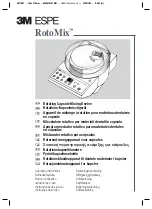
Sentinel V SC and RT Operation Manual
September
2017
EAR-Controlled Technology Subject to Restrictions Contained on the Cover Page.
Page 241
Expert Vertical Beam Profile Commands
Changing expert vertical beam commands may result in data analysis, visualization, or serious
errors in TRDI software.
#ZB – Vertical Beam Bandwidth
Purpose:
Sets the vertical beam profile bandwidth (sampling rate).
Format:
#ZBn
Range:
n = 0=Wide (25%), 1=Narrow (6.25%), -1 = same as WB command
Default:
#ZB-1
Recommended Setting. The default setting for this command is recommended for most applications.
Software warning: Changing this command may cause problems with TRDI display and processing
software.
Description: Narrow bandwidths allow the Sentinel V Real-Time to profile farther, but the standard de-
viation is increased by as much as 2.5 times.
#ZC – Vertical Beam Correlation Threshold
Purpose:
Sets the minimum threshold for correlation magnitude that vertical beam profile velocity
data must meet to be considered valid.
Format:
#ZCnnn
Range:
nnn = 0 to 255 counts, -1 = same as WC command
Default:
#ZC-1
Recommended Setting. The default setting for this command is recommended for most applications.
Description: The Sentinel V Real-Time uses #ZC to screen vertical beam profile data for the minimum
acceptable correlation requirements. The nominal (maximum) correlation depends on sys-
tem frequency and vertical beam profile depth cell size (#ZS). #ZC sets the threshold of the
correlation below, which the Sentinel V Real-Time flags the data as bad and does not aver-
age the data into the ensemble.
The default threshold is 64 counts. A solid target would have a correlation of 128 counts.
#ZD – Vertical Beam Data Out
Purpose:
Selects the vertical beam profile data types collected by the Sentinel V Real-Time.
Format:
#ZD v;c;a;p;s;*;*;*;*;wd, -1 = same as WD command
Range:
Firmware switches (see description)
Default:
#ZD 0000000001
Recommended Setting. The default setting for this command is recommended for most applications.
















































